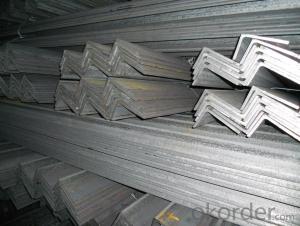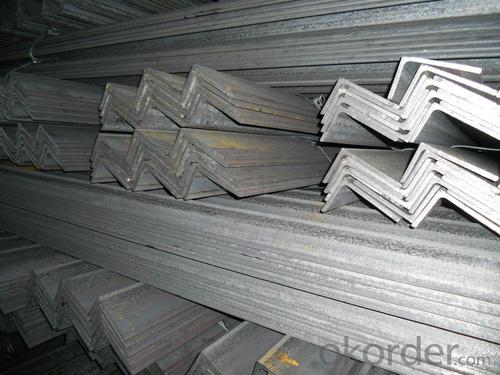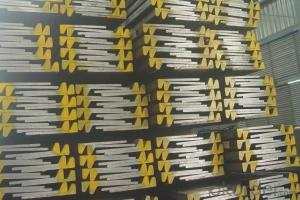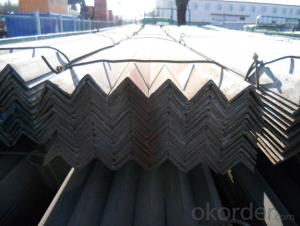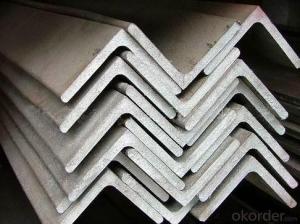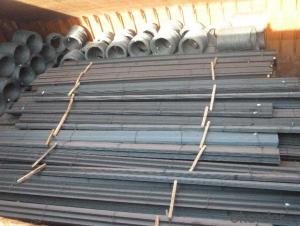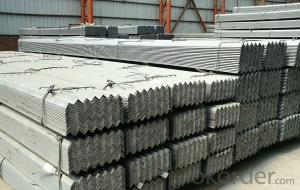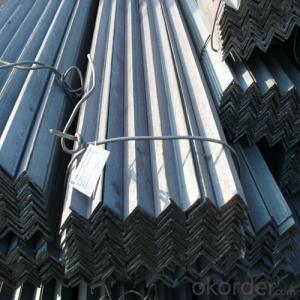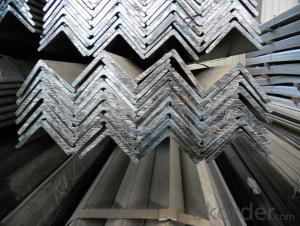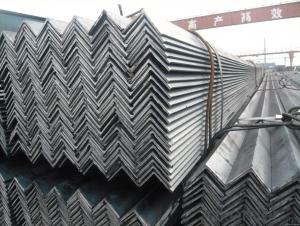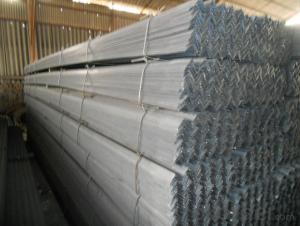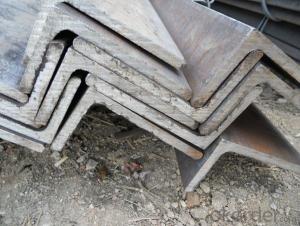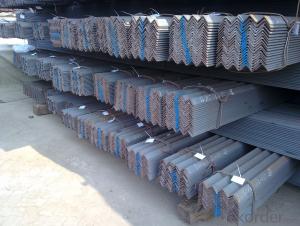Prime HR Unequal Angle Steel For Steel Structure
- Loading Port:
- China main port
- Payment Terms:
- TT OR LC
- Min Order Qty:
- 100 m.t.
- Supply Capability:
- 20000 m.t./month
OKorder Service Pledge
OKorder Financial Service
You Might Also Like
Product Description:
OKorder is offering Prime HR Unequal Angle Steel For Steel Structure at great prices with worldwide shipping. Our supplier is a world-class manufacturer of steel, with our products utilized the world over. OKorder annually supplies products to African, South American and Asian markets. We provide quotations within 24 hours of receiving an inquiry and guarantee competitive prices.
Product Applications:
PrimePrime HR Unequal Angle Steel For Steel Structure are ideal for structural applications and are widely used in the construction of buildings and bridges, and the manufacturing, petrochemical, and transportation industries.
Product Advantages:
OKorder's Prime HR Unequal Angle Steel For Steel Structure are durable, strong, and wide variety of sizes.
Main Product Features:
· Premium quality
· Prompt delivery & seaworthy packing (30 days after receiving deposit)
· Can be recycled and reused
· Mill test certification
· Professional Service
· Competitive pricing
Product Specifications:
Manufacture: Hot rolled
Grade: Q195 – 235
Certificates: ISO, SGS, BV, CIQ
Length: 6m – 12m, as per customer request
Packaging: Export packing, nude packing, bundled
| UNEQUAL ANGLE STEEL | |||||
| size(mm) | a(mm) | a1(mm) | thickness(mm) | kg/m | length(m) |
| 75*50*5 | 75 | 50 | 5 | 4.808 | 6m,9m,12m |
| 75*50*6 | 75 | 50 | 6 | 5.699 | 6m,9m,12m |
| 75*50*8 | 75 | 50 | 8 | 7.431 | 6m,9m,12m |
| 100*75*7 | 100 | 75 | 7 | 9.34 | 6m,9m,12m |
| 100*75*8 | 100 | 75 | 8 | 10.6 | 6m,9m,12m |
| 100*75*9 | 100 | 75 | 9 | 11.8 | 6m,9m,12m |
| 100*75*10 | 100 | 75 | 10 | 13 | 6m,9m,12m |
| 100*75*12 | 100 | 75 | 12 | 15.4 | 6m,9m,12m |
| 125*75*7 | 125 | 75 | 7 | 10.7 | 6m,9m,12m |
| 125*75*8 | 125 | 75 | 8 | 12.2 | 6m,9m,12m |
| 125*75*9 | 125 | 75 | 9 | 13.6 | 6m,9m,12m |
| 125*75*10 | 125 | 75 | 10 | 15 | 6m,9m,12m |
| 125*75*12 | 125 | 75 | 12 | 17.8 | 6m,9m,12m |
| 150*90*8 | 150 | 90 | 8 | 14.7 | 6m,9m,12m |
| 150*90*9 | 150 | 90 | 9 | 16.4 | 6m,9m,12m |
| 150*90*10 | 150 | 90 | 10 | 18.2 | 6m,9m,12m |
| 150*90*12 | 150 | 90 | 12 | 21.6 | 6m,9m,12m |
| 200*100*10 | 200 | 100 | 10 | 23 | 6m,9m,12m |
| 200*100*12 | 200 | 100 | 12 | 27.62 | 6m,9m,12m |
| 200*100*15 | 200 | 100 | 15 | 34.04 | 6m,9m,12m |
FAQ:
Q1: Why buy Materials & Equipment from OKorder.com?
A1: All products offered byOKorder.com are carefully selected from China's most reliable manufacturing enterprises. Through its ISO certifications, OKorder.com adheres to the highest standards and a commitment to supply chain safety and customer satisfaction.
Q2: How soon can we receive the product after purchase?
A2: Within three days of placing an order, we will arrange production. The normal sizes with the normal grade can be produced within one month. The specific shipping date is dependent upon international and government factors, the delivery to international main port about 45-60days.
Q3: How many tons of steel products could be loaded in containers?
A3: Usually the steel products are delivered by bulk vessel because of the large quantity and the freight. However, there are no bulk vessel enter some seaports so that we have to deliver the cargo by containers. The 6m steel product can be loaded in 20FT container, but the quantity is changed according to the size, usually from 18tons to 25tons.
Images:
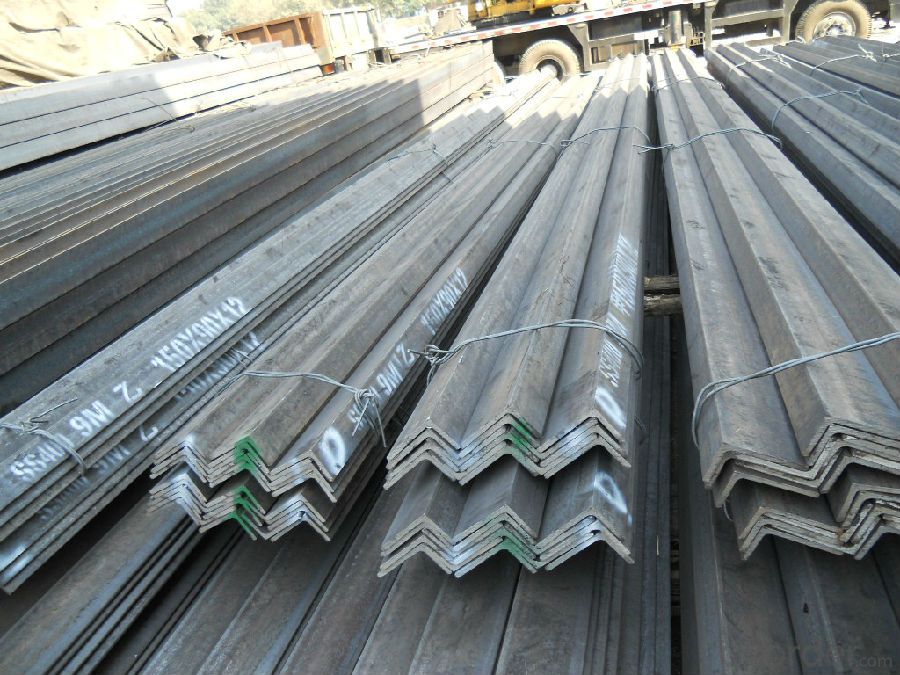
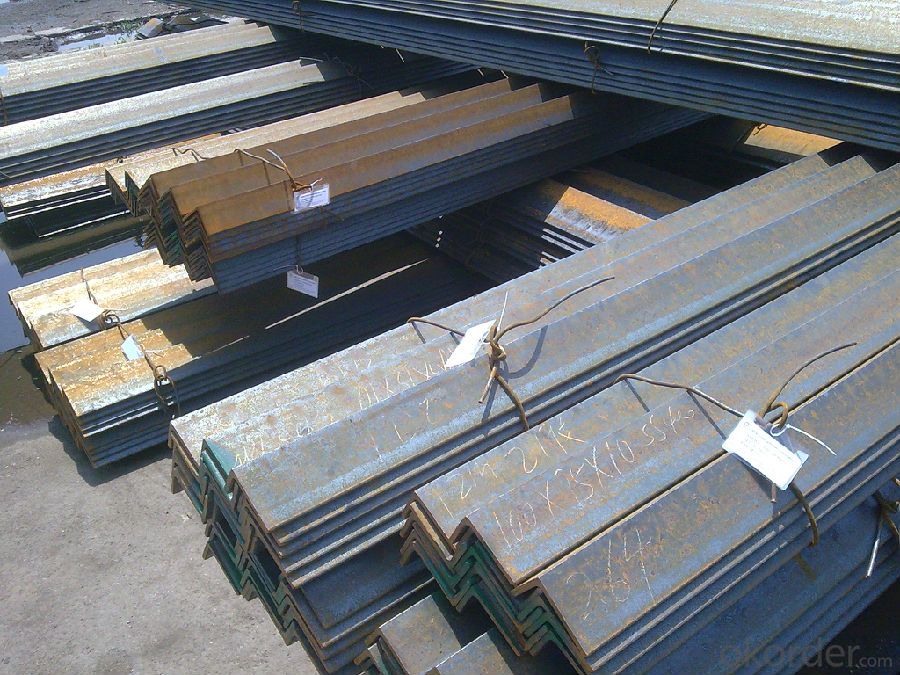
- Q: Do steel angles require maintenance?
- Maintenance is necessary for steel angles. Despite being durable, steel can still rust and corrode, especially when exposed to moisture or harsh environments. To prevent these problems and prolong the lifespan of steel angles, regular maintenance is required. Common maintenance practices include checking for rust or damage, cleaning the surface to remove dirt and debris, and applying protective coatings or paints to prevent corrosion. Proper storage and handling also play a role in maintaining steel angles. It is crucial to follow manufacturer instructions and seek advice from experts to determine the specific maintenance needs for steel angles in various applications.
- Q: Can steel angles be used as reinforcements in concrete structures?
- Yes, steel angles can be used as reinforcements in concrete structures. Steel angles are commonly used to provide additional strength and support to concrete elements, such as beams, columns, and slabs. They are placed within the concrete to enhance its load-bearing capacity, improve structural integrity, and prevent cracking or failure. The versatility and durability of steel angles make them suitable for reinforcing various types of concrete structures.
- Q: What is the minimum thickness of a steel angle?
- The minimum thickness of a steel angle is typically determined by the standards and specifications set by the industry or governing bodies. These standards may vary depending on the intended use and structural requirements of the steel angle. In general, the minimum thickness of a steel angle can range from 1/8 inch to 1/4 inch, although thinner or thicker options may be available depending on the specific application. It is important to consult the appropriate standards or consult with a structural engineer to ensure that the chosen steel angle meets the required thickness for the desired application.
- Q: How do steel angles perform in cold weather conditions?
- Due to their high durability and strength, steel angles are well-suited for use in cold weather conditions. The excellent properties of steel, such as its ability to withstand extreme temperatures and resist deformation, make it an ideal material for various applications in cold environments. In the construction, infrastructure, and manufacturing industries, steel angles are commonly employed to provide structural support and stability. They maintain their structural integrity in cold weather, ensuring the safety and longevity of the structures they are incorporated into. Moreover, steel possesses a low thermal expansion coefficient, meaning it experiences minimal contraction or expansion with temperature changes. Consequently, it is less prone to warping or cracking in freezing conditions. Overall, steel angles are a dependable choice for cold weather conditions, offering outstanding performance and reliability.
- Q: Are steel angles heat-treated?
- Steel angles are indeed capable of undergoing heat treatment. To modify the physical and mechanical properties of the steel, controlled heating and cooling processes are employed in heat treatment. This can yield various desirable attributes, such as enhanced strength, hardness, toughness, or improved machinability. When it comes to heat treating steel angles, commonly employed techniques include annealing, quenching, tempering, or normalizing. The selection of a specific heat treatment method is contingent upon the desired final properties and the intended application of the steel angles.
- Q: How do you calculate the compression strength of a steel angle?
- To calculate the compression strength of a steel angle, you need to consider its geometric properties and the material properties of the steel. First, you should determine the cross-sectional area of the steel angle. This can be calculated by multiplying the thickness of the angle by the width of the flange and subtracting the area of any holes or cutouts in the angle. Next, you need to determine the yield strength of the steel. The yield strength is the maximum stress that the steel can withstand before it starts to deform permanently. This information can usually be obtained from the steel manufacturer or reference materials. Once you have the cross-sectional area and the yield strength, you can calculate the compression strength using the formula: Compression strength = Yield strength * Cross-sectional area It's important to note that this calculation assumes that the steel angle is subjected to a purely compressive load, without any bending or torsional forces. If the angle is subjected to other types of loading, such as bending or torsion, additional calculations or testing may be required to accurately determine its strength.
- Q: What are the fire resistance properties of steel angles?
- Steel angles, also known as L-shaped metal bars, possess excellent fire resistance properties. Due to the composition and structure of steel, angles have a high melting point and do not easily combust or support the spread of fire. In the event of a fire, steel angles retain their structural integrity for an extended period, providing valuable time for occupants to evacuate and for firefighters to control the situation. This fire resistance is attributed to the non-combustible nature of steel, as well as its ability to dissipate heat efficiently. Additionally, steel angles have a low thermal conductivity, meaning they do not readily transfer heat from the fire to the surrounding areas. This property helps to prevent the rapid spread of fire and minimizes the risk of structural failure. As a result, steel angles are often utilized in fire-resistant building designs and construction, providing a reliable and safe option for structural support in fire-prone environments.
- Q: Can steel angles be used for balcony railings?
- Yes, steel angles can be used for balcony railings. They are strong and durable, providing adequate support and safety for the balcony. Additionally, steel angles can be customized to fit the specific design and aesthetic requirements of the railing.
- Q: How do steel angles contribute to sustainable construction?
- Steel angles contribute to sustainable construction in multiple ways. Firstly, steel is an incredibly durable and long-lasting material, which means that structures built using steel angles will have a longer lifespan compared to those made with other materials. This reduces the need for frequent repairs or replacements, thus minimizing waste and reducing the overall environmental impact of construction. Secondly, steel is a highly recyclable material. At the end of a structure's life cycle, steel angles can be easily recycled and repurposed for other construction projects. This reduces the demand for new steel production, which is energy-intensive and can result in significant carbon emissions. Additionally, steel angles offer design flexibility, allowing architects and engineers to create more efficient and innovative structures. This can lead to optimized building designs that require less energy for heating, cooling, and maintenance, contributing to energy savings and reduced greenhouse gas emissions. Moreover, steel angles are lightweight yet incredibly strong, resulting in less material usage and reduced transportation costs. As a result, the overall carbon footprint associated with steel construction is lower compared to other materials. Furthermore, steel angles have excellent fire resistance properties, making them a safer choice for construction. This increases the longevity of structures and reduces the risk of damage or destruction during fires. Consequently, the need for rebuilding or reconstructing is reduced, leading to less material waste and environmental impact. In conclusion, steel angles contribute to sustainable construction through their durability, recyclability, design flexibility, energy efficiency, lightweight nature, fire resistance, and overall reduced environmental impact. By incorporating steel angles into construction projects, we can create more sustainable and environmentally friendly structures that benefit both the present and future generations.
Send your message to us
Prime HR Unequal Angle Steel For Steel Structure
- Loading Port:
- China main port
- Payment Terms:
- TT OR LC
- Min Order Qty:
- 100 m.t.
- Supply Capability:
- 20000 m.t./month
OKorder Service Pledge
OKorder Financial Service
Similar products
Hot products
Hot Searches
Related keywords
